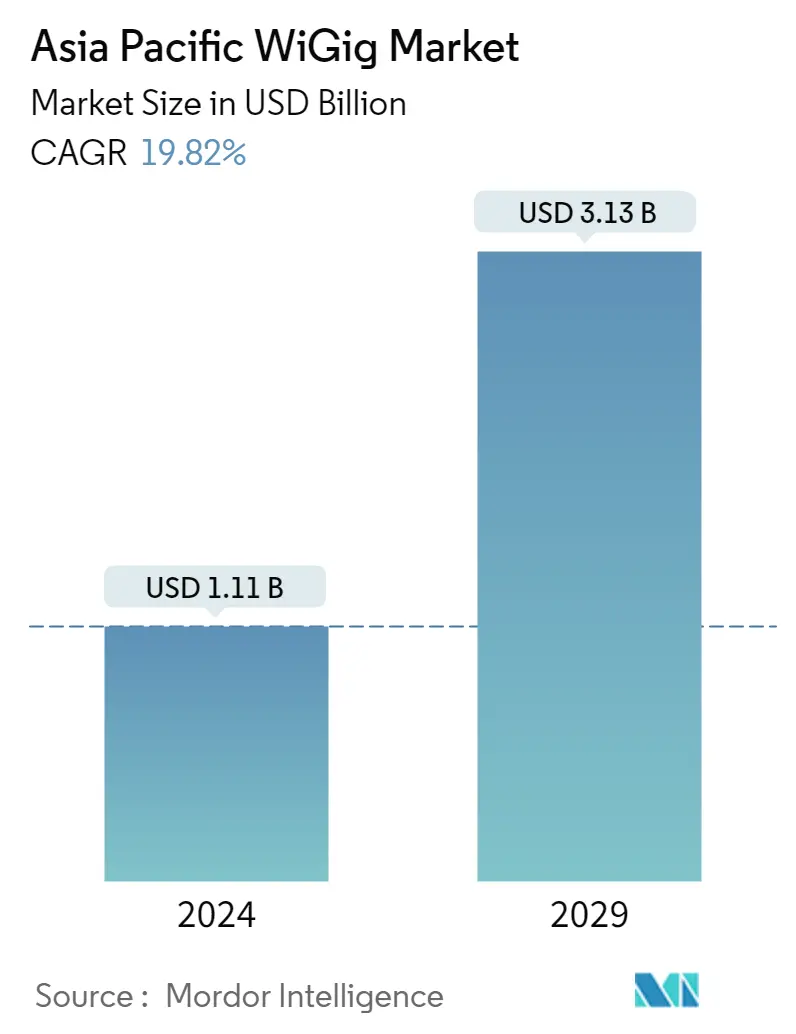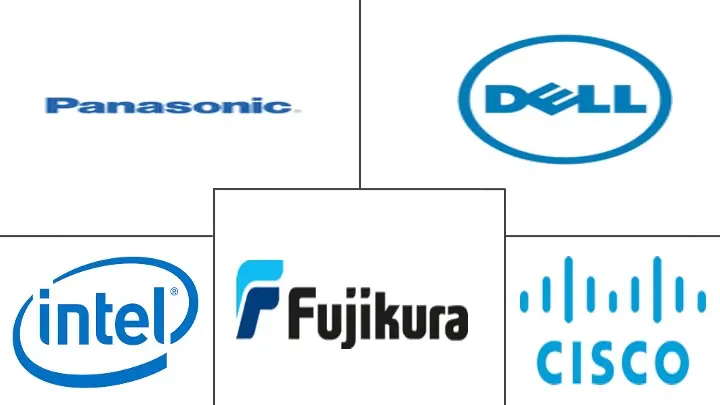Market Size of Asia Pacific WiGig Industry

| Study Period | 2019 - 2029 |
| Base Year For Estimation | 2023 |
| Market Size (2024) | USD 1.11 Billion |
| Market Size (2029) | USD 3.13 Billion |
| CAGR (2024 - 2029) | 19.82 % |
| Market Concentration | Low |
Major Players
*Disclaimer: Major Players sorted in no particular order |
Need a report that reflects how COVID-19 has impacted this market and its growth?
Asia Pacific WiGig Market Analysis
The Asia Pacific WiGig Market size is estimated at USD 1.11 billion in 2024, and is expected to reach USD 3.13 billion by 2029, growing at a CAGR of 19.82% during the forecast period (2024-2029).
- In recent years, there has been an increased emphasis on high-speed internet and 5G networks. Emerging countries, including China, Japan, Taiwan, India, and Australia, are the major driving countries in the region. China has an established ecosystem for 5G and is expected to grow further in the forecast period. However, the 5G technology is expected to serve as a hotspot technology in existence with the current mobile broadband. The growth is expected to be gradual in the country.
- Due to the advent of the Internet of Things (IoT) and machine-type communication (MTC), exponential wireless traffic growth is expected in the near future. This would mean an increase in current bandwidth, assuming the same spectrum efficiency. For instance, the industrial, scientific, and medical (ISM) RF band in the 5.4 GHz region is approximately 500 MHz, mainly used by wireless fidelity WiFi. This bandwidth is already getting saturated, which is one of the driving forces of WiGig.
- WiGig is expected to be one of the main options for quick and easy data delivery without a physical wired connection. As it does not pass through walls and has a very short range, it is more useful for transfers within a short range and won't replace or directly supersede WiFi or cellular. Many consumer electronic devices will be multi-mode WiFi and WiGig capable.
- As a result of WiGig features, such as elevated speed connection, extraordinary reliability, and decreased latency, the healthcare system has benefited from improved response times, patient monitoring, data collection and analytics, remote collaboration, and resource allocation. It also sets an example for digitalized, data-driven, and Cloud-based innovative major public emergency response platforms in the region.
- The Telecom Regulatory Authority of India (TRAI) has mentioned that the delicensed bands available for WiFi are congested. According to the analysis of DigiAnalysis, in India, there are around 0.5 million public hotspots available as of 2022, which is expected to reach around 50 million by 2030. In contrast, there are over 45 million hotspots available worldwide. Hence, the board has shown a need to expand this infrastructure to at least one hotspot for 150 persons, creating a demand for another 8 million hotspots.

